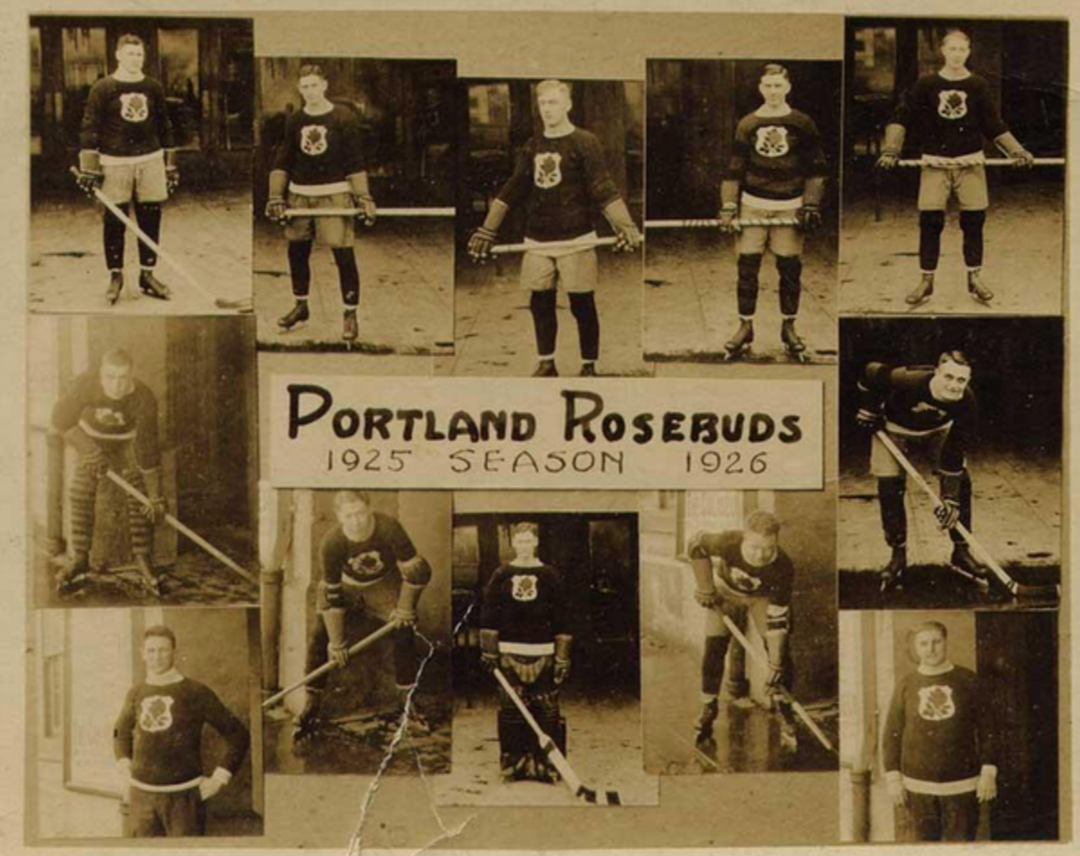In honour of Hockey Day in Canada and this year’s hosts from Kenora, we wanted to take a look at some of the best “old” hockey sweaters that ever existed, starting with our host city.
This list is not a ranking, but a collection of some of the best sweaters from the long past. We lead off with the sharp old sweater that was once used by the Stanley Cup champion Kenora Thistles.
KENORA THISTLES

A thing of beauty. The Thistles won the Stanley Cup in 1907, defeating the Montreal Wanderers 4-2 and 8-6 in a two-game goal differential series. Kenora is the smallest city to ever win the Cup and also held it for the shortest time of any champion: a mere 62 days. Two months after winning it from the Wanderers, the Montreal club challenged them again and this time the two games were split, but the Thistles lost the goal differential battle.
Included on that championship Thistles roster was this man, future Hall of Famer and name sake of the NHL’s scoring title trophy, Art Ross, who was on loan to the team at the time.

TRAIL SMOKE EATERS

Based out of Trail, B.C., the “Smokies” were never a Stanley Cup champion, but instead won two World Championships as representatives of Canada in 1939 and 1961, and two Allan Cups in 1938 and 1962. They started out as a senior team in 1926 and were subsidized by the mining company in the town.
Today, the team lives on (with the same logo) as a member of the BCHL, a Jr. A league.
PITTSBURGH PIRATES

Did you know the Pittsburgh Penguins weren’t the first NHL representatives from Steel Town? The Pirates represented the city as a big league hockey franchise from 1925-26 through 1929-30. Originally named the Yellow Jackets when they were part of the American Amateur Association, the team was sold and renamed after the ball club when that league folded. In fact, they used the black and gold colour scheme before the baseball club did (the NL’s Pirates used to be red and blue).
The Pirates ran into money problems and their arena, the Duquesne Gardens, quickly became too small for the league. Their star player, Lionel Conacher — who was later named Canada’s top athlete of the first half of the 20th century — had to be traded to the New York Americans for cash during the 1926-27 season.
PHILADELPHIA QUAKERS

When the Pirates had to move, they stayed in-state and relocated to Philadelphia as the Quakers. However, this team lasted only one season and experienced similar problems to the Pittsburgh team. Their arena seated only 6,000, which was dwarfed by some of the newer NHL arenas in Montreal (the Forum) and Toronto (Maple Leafs Gardens).
The Great Depression made it difficult for some teams to operate and ultimately contributed to the demise of the Quakers after one season. The NHL “suspended” the team’s operations each year until 1936, when it finally pulled the plug on the franchise.
PORTLAND ROSEBUDS

There is much speculation around NHL expansion (or even relocation) these days, specifically to the American northwest into Seattle or even Portland. Both places have a rich history in hockey. For instance, did you know Portland was the first American team to ever have its name engraved on the Stanley Cup?
It’s important to note that the Rosebuds didn’t win the Stanley Cup. They were champions of the Pacific Coast Hockey Association that season, which gave them the right to play for the Cup against the winners of the National Hockey Association, which in 1916 were the Montreal Canadiens.
The Rosebuds, who etched their name on the Cup anyway, lost the best-of-five series 3-2 and the win was the first in the Canadiens’ great history.
Two years later, after the 1917-18 season, the PCHA folded. The Rosebuds would return in 1925-26 as a member of the Western Hockey League when the team from Regina was relocated. However, the second incarnation of the Rosebuds lasted just one season, after which the WHL folded and many of its teams and players were sold to the NHL. The Rosebuds players were sold to a brand new NHL team: the Chicago Black Hawks.

[relatedlinks]








